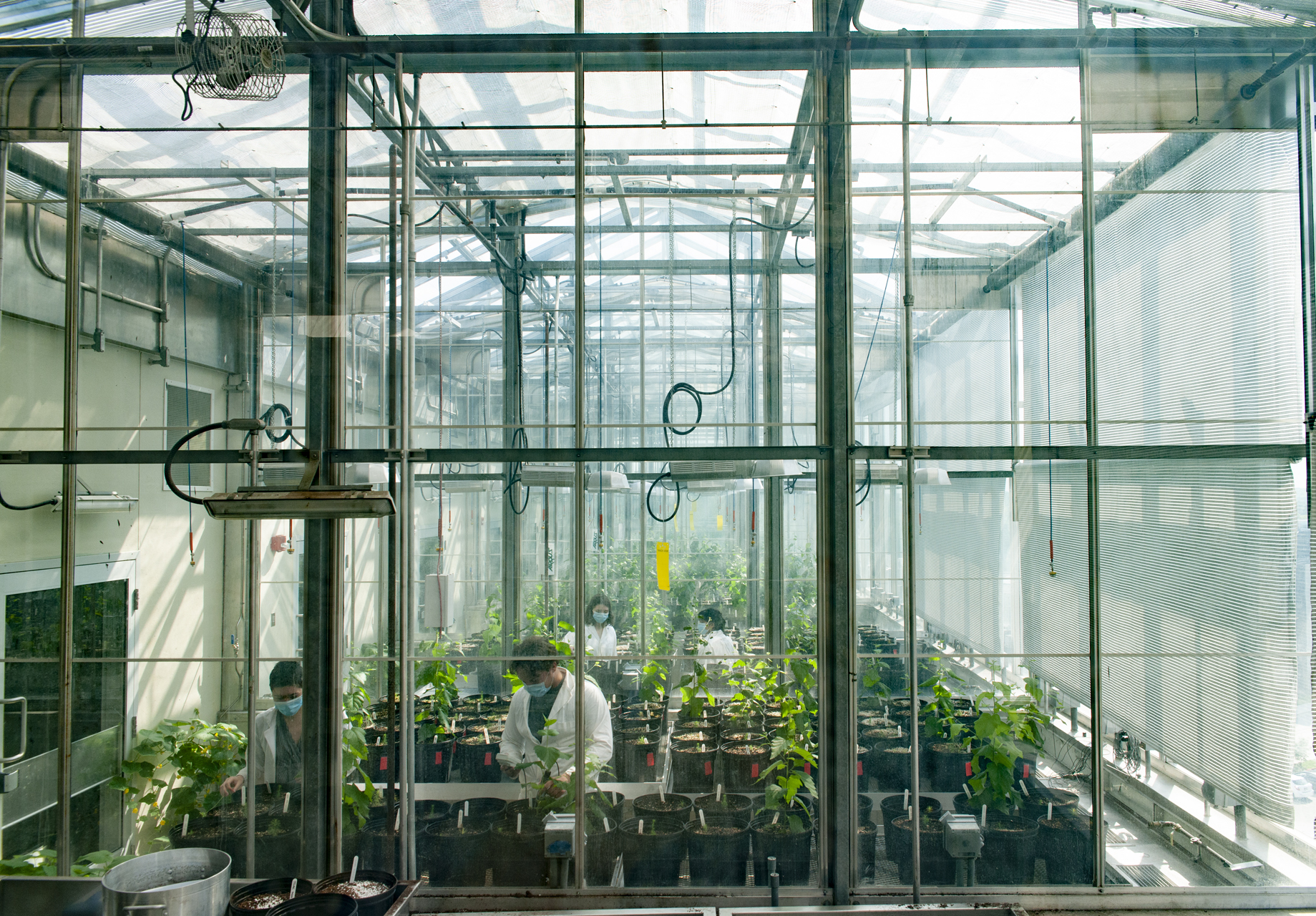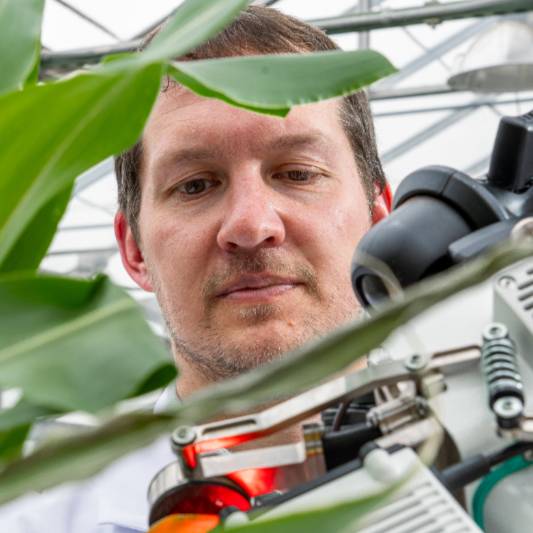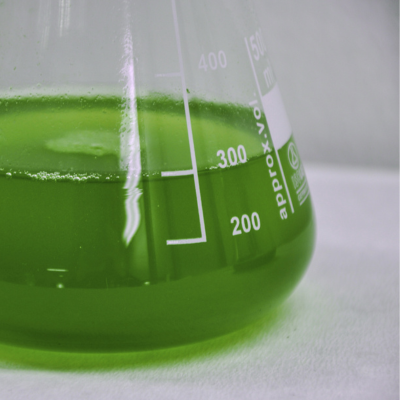MSU researchers find trees acclimate to changing temperatures
Article Highlights
- Researchers from the Walker lab are looking at how paper birch trees are acclimatizing to changing environments through how they manage a vital plant process called photorespiration.
- This research was published in Scientific Reports.
- They found that the trees do not increase their enzyme capacity depending on the climate they are grown in; instead, they maintain similar capacities across conditions.
Climate change is a persistent and growing challenge to plant life on our planet. Changes to the environments that plants are accustomed to affects how they grow.
Plant scientists are left to question how these environmental changes will impact plant life, and whether or not plants can acclimate to the new status quo.

By Mitchell Zimmer
“Human activities are continuing to release an enormous amount of CO2 and it's warming our planet… Plants are just taken along for the journey,” said Luke Gregory, former graduate student in the Walker lab.
Researchers from the Walker lab at the Michigan State University-Department of Energy Plant Research Laboratory, or PRL, are looking at how paper birch trees are acclimatizing to changing environments through how they manage a vital plant process called photorespiration. This paper was published in Scientific Reports.
“If plant metabolism was a freeway system, photorespiration would be the second-highest trafficked road,” said Berkley Walker, associate professor in the Department of Plant Biology and at the PRL. “We are interested in understanding if the roads of this important pathway are large enough to handle all this traffic under present and future climate conditions.”
In us humans, acclimation happens when we become accustomed to new conditions. We’ve all had to acclimatize in our lives, whether it is getting used to the cold when winter rears its head or learning the ropes at a new job.
Plants must acclimate to new conditions as well. This is complicated by the fact that
the increase of atmospheric CO2 and global warming have the opposite effects on photosynthesis and photorespiration.
When temperature increases, so does photorespiration, but when CO2 increases, photorespiration decreases. This tradeoff may alter the efficiency of photorespiration. The trees need to use
more enzymes involved in the photorespiration pathway when adjusted to these new condition.

By Mitchell Zimmer
For this study, researchers looked at if paper birch adjusts the activity of photorespiratory enzymes under different environmental conditions. Paper birch was selected for this experiment because they live in boreal forest biomes, which are located in the northern most parts of the planet and are expected to be among the hardest hit ecosystems by climate change.
The growth conditions were designed to mimic current, moderate and extreme climate change scenarios for the boreal forest regions, as simulated by the Intergovernmental Panel on Climate Change. In each of these, the researchers altered the CO2 concentration in the surrounding atmosphere and increased air temperatures in different combinations.
“This study explored whether plants fine-tuned their enzyme capacity based on demand or whether they keep a buffer, so they have extra capacity in reserve to handle unpredictable changes,” said Gregory, first author on the study.
Into the Biotron
Trees were grown from seed by researchers from Professor Danielle Way’s lab at the University of Western Ontario. Way grew paper birch trees under six environmental conditions using the university’s Biotron, a research facility that can simulate nearly any climate on earth.
Way’s lab took measurements of the trees after four months of growth and sent leaf clippings to MSU with the help of former postdoctoral researcher Stephanie Schmiege, where Gregory and his team looked at nine enzymes involved in the photorespiratory pathway in these leaves and their activities.

By Mitchell Zimmer
They found that the trees do not, in fact, increase their enzyme capacity depending on the climate they are grown in and instead maintain similar capacities across all six future climate scenarios. However, all the enzyme capacities measured in the study were more than was needed for the photorespiratory pathway. Meaning the trees were prepared to grow, even under changing conditions.
“It was really interesting to find that there's this safety factor that these plants have and it's across all of these different environments that they're able to have this buffer capacity,” Gregory said. “At first, we thought there was going to be this specific change to demand, but what we found is that across all of these different plants, they do maintain a buffer. They're able to deal with these different changes whether under current moderate or extreme conditions.”
This is good news: the trees have a built-in mechanism that will help them survive despite the changing climate, at least when it comes to photorespiration.
However, this is just one piece of the puzzle in understanding how photorespiration is and will continue to be affected by anthropogenic climate change.
“It’s important that we understand how plants are responding to current conditions and future conditions because we need them in our lives,” Gregory said. “Understanding if plants can acclimate or whether over generations they can adapt to these certain environments is important to understand because they provide a lot of fuel, food and fiber for us.”
Into the Future

Courtesy photo
Like the trees, researchers often find themselves needing to acclimatize to new conditions. Gregory found himself in that position when he graduated from Michigan State University with his Ph.D. in Plant Biology and Molecular Plant Sciences in spring of 2024.
Now, he is a postdoctoral associate at Cornell in Michael Gore’s and Ying Sun’s labs.
“What excited me about being at Cornell is it is an opportunity to leverage what I learned at the PRL,” Gregory said.
Gregory spends less time in the lab and more in the field working on corn. His research looks at forecasting plant performance by using machine learning, remote sensing and crop growth models. This can help inform plant breeding practices.
This work was funded by the Division of Chemical Sciences, Geosciences, and Biosciences, Office of Basic Energy Sciences of the United States Department of Energy under grant DE-FG02-91ER20021 and the National Science Foundation award from the Division of Integrated Organismal Systems. Additional funding was provided by Plant Resilience Institute of Michigan State University, a NSERC Discovery Grant and a Strategic Partnership Grant.



